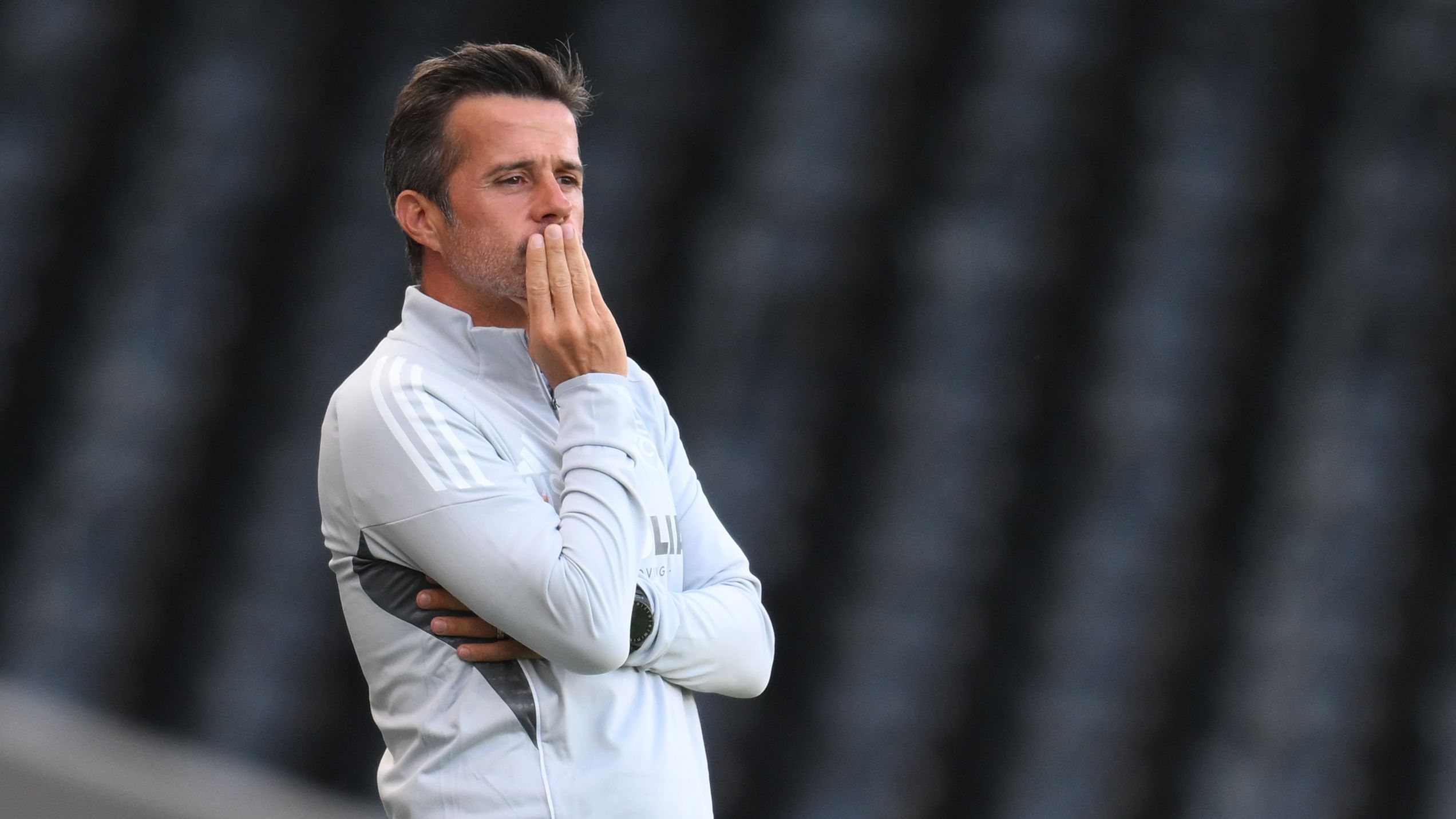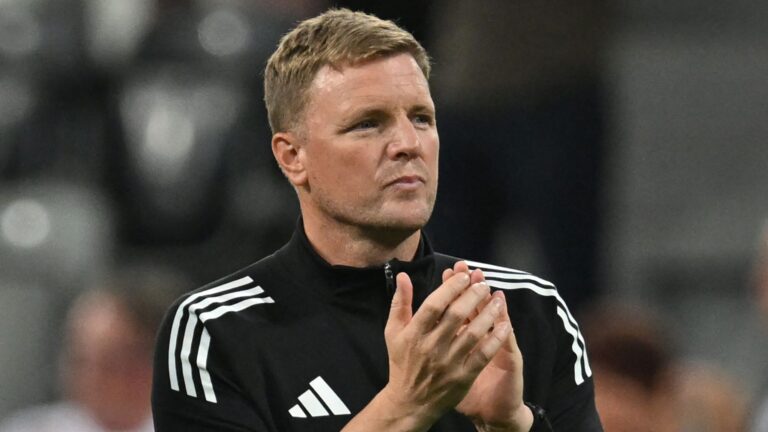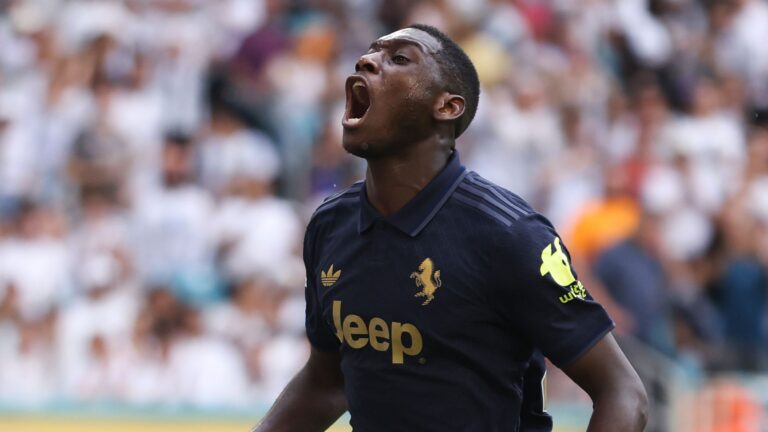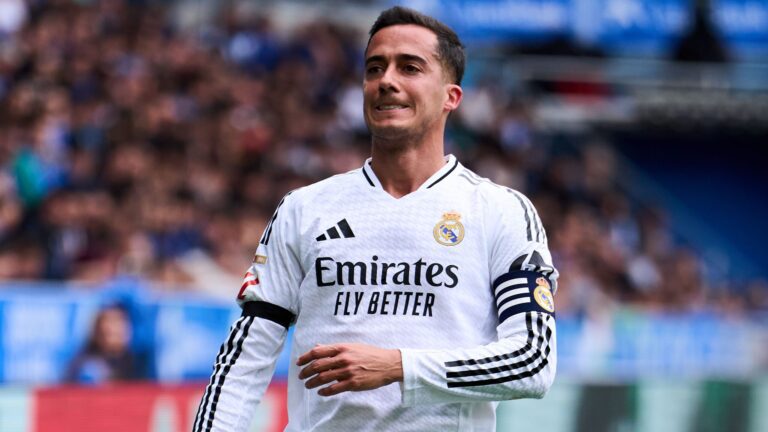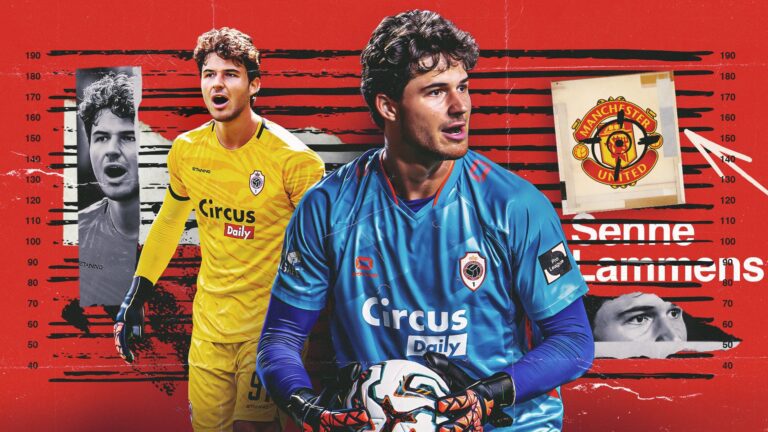Transforming Teams Through Premier League Transfers: The Key to Unlocking Success
In the intense world of English football, Premier League transfers are essential for revitalizing rosters and boosting team performance. A leading coach recently voiced his disappointment over his squad’s minimal moves in the most recent transfer period, emphasizing the mounting demands on mid-tier clubs to secure skilled players and avoid the drop while chasing major milestones in this brutal competition.
- A coach deems his squad’s transfer efforts insufficient
- The lineup has incorporated just a single new member
- The squad’s season opener is set against Brighton this weekend



Premier League Transfers: Fulham’s Calculated Yet Restrained Squad Upgrades
Situated in West London, Fulham has added only one player before facing Brighton and Hove Albion. This includes the acquisition of goalkeeper Benjamin Lecomte, who joined without a transfer fee after his time at Montpellier ended in the 2024-25 Ligue 1 season. Recent market data shows that the typical Premier League team has completed around seven acquisitions this summer due to shifting economic factors, which might leave Fulham more vulnerable in their defensive setup within the top flight.
Missed Chances and Unmet Squad Aspirations
During the transfer window, Fulham pursued various talents, such as a standout midfielder who impressed on loan and was expected to sign permanently. Regrettably, talks fell through, leading to significant letdown for the coaching staff. Meanwhile, giants like Arsenal have locked in elite reinforcements, highlighting Fulham’s struggles in finalizing agreements and fulfilling their recruitment plans.
Coach’s Insights on Transfer Hurdles
In an open interview with the BBC, the coach shared his frustration with the club’s strategy: “This outcome falls short of our intentions. We anticipated a more proactive effort from within. We outlined specific targets and a defined strategy, but it didn’t materialize. We’re short on support in critical areas that desperately need strengthening.”
He further noted: “Did we foresee this? Not at all; these processes are full of unpredictability.”
Building Momentum in Warm-Up Games Amid Transfer Shortfalls
Despite recruitment setbacks, Fulham has shown impressive form in their pre-season matches. Led by the coach, the team has triumphed in all three friendlies against sides like Nottingham Forest, Al-Ittihad, and Eintracht Frankfurt. This positive streak, similar to how teams such as Chelsea use exhibition games to gain an edge, indicates that honing tactics and approaches could help offset the impact of limited new additions as the official campaign begins.
Upcoming Premier League Fixtures: Opportunities for Fulham’s Growth
Following their away encounter with Brighton, Fulham, who finished 11th last season, will host Manchester United for their first home league match on August 24. They also have a home cup clash against Bristol City in the second round of the Carabao Cup on August 26, presenting early chances to compensate for team weaknesses. In today’s Premier League environment, where mid-table teams aim for European spots, these games will test the club’s resilience under scrutiny.
Analyzing the Coach’s Discontent
In the demanding realm of Premier League football, when a head coach publicly questions their team’s recruitment tactics, it sparks widespread discussions among fans and experts. Recently, a prominent Premier League leader criticized a “conservative” approach to signings just before the season starts, revealing tensions between on-field goals and boardroom choices during this pivotal time.
The leader pointed out that insufficient planning in acquisitions could leave the team unprepared for league challenges. Terms like “Premier League transfers” and “coaching dissatisfaction” often appear in media reports as analysts evaluate the outcomes. This restrained method typically involves fewer pickups, emphasizing up-and-coming players or temporary loans over veterans, often driven by budget limitations that can disappoint supporters and athletes.
Factors Influencing a Conservative Premier League Transfer Policy
Exploring further, multiple reasons could lead a club to adopt a measured stance on Premier League dealings. Strict financial guidelines, including the updated Profit and Sustainability Regulations (PSR), restrict expenditures to avoid sanctions. Teams with limited funds might choose to retain their current players instead of pursuing costly upgrades.
- Financial Limitations: Budget issues frequently prevent Premier League clubs from making bold acquisitions.
- Focus on Sustainable Growth: This tactic may support a long-term vision, such as nurturing academy talents for ongoing development.
- Evolving Market Trends: Variations in player costs and global influences can complicate transactions, with recent statistics showing a 15% increase in transfer fees due to inflation in 2025.
The Coach’s Key Worries
In the competitive arena of the Premier League, coaches often express their unease when clubs opt for a tentative transfer strategy, particularly as a new season approaches. Consider a case where a high-profile Premier League coach has openly shared concerns about his club’s hesitation to invest in vital signings. This reluctance might arise from fiscal restrictions or previous recruitment errors, but it exposes teams to risks in a league defined by fierce rivalry. Phrases like “Premier League coach concerns” underscore how these topics regularly dominate headlines, illustrating the urgency to assemble a roster ready to compete for top honors.
A reserved transfer plan could mean avoiding large investments or favoring youth prospects over proven stars. However, as this coach suggests, such a method might fail by creating vulnerabilities in the lineup. For example, if a team neglects to reinforce their backline or add inventive midfielders before the season, they could face early difficulties that jeopardize their progress. This pattern reflects a wider Premier League trend where coaches advocate for more decisive actions to keep pace with powerhouses like Manchester City or Arsenal, who thrive through proactive recruitment.
Underlying Causes of the Conservative Approach
Multiple elements push clubs toward a cautious transfer policy in the Premier League. Financial Fair Play (FFP) rules are a major factor, compelling teams to manage their finances and steer clear of overspending that might result in penalties. A club’s careful transfer strategy could also stem from the uncertainty of the market, where soaring prices for elite players make agreements hazardous.
- Economic Challenges: Amid the lingering effects of global events and escalating player salaries, many clubs prioritize stability over extravagance, turning to loan arrangements or free agents instead of high-profile buys.
- Lessons from the Past: Teams that have squandered resources on ineffective signings, such as certain costly mistakes in past windows, are now more reluctant. A coach might contend that this caution overlooks the immediate need to fortify for the upcoming season.
- Competitive Dynamics: The Premier League transfer market is highly contested, with clubs competing for the same assets. If a coach’s requests for reinforcements are ignored, it could lead to lost chances, like missing out on a rising forward to a rival team.
Recognizing these drivers allows fans and observers to understand why a Premier League coach’s frustrations are tied to strategic imperatives rather than mere complaints.
Advantages of an Assertive Transfer Strategy
Adopting a more dynamic transfer approach can deliver substantial benefits for Premier League teams, effectively tackling a coach’s issues with restraint. By strategically investing in new talent, clubs can increase roster depth, elevate team spirit, and heighten their prospects for achievement in the new season.
- Improved Team Composition: Adding skilled players can address key weaknesses, such as enhancing speed on the flanks or solidifying defense, leading to superior results on the field.
- Future-Proof Investments: A bold strategy often includes identifying emerging players who can develop with the club, offering long-term gains while adhering to FFP and building a strong foundation.
- Team Motivation: A coach might highlight that fresh signings invigorate the current squad, promoting a culture of victory and minimizing risks of fatigue or unrest.
For instance, teams that embraced this philosophy in recent transfer periods, such as those making shrewd investments to secure players like a young winger, have seen better league positions and greater fan involvement. This forward-thinking attitude can transform a hesitant strategy, making the team more adaptable to injuries and performance dips. Recent updates indicate that clubs with aggressive moves averaged a 20% improvement in standings over the last two seasons.
Strategies for Handling Transfer Periods Effectively
For Premier League coaches or executives facing transfer challenges, here are some useful strategies to balance caution with ambition as the new season nears. These methods can help reduce risks while addressing the concerns raised by coaches.
- Perform Detailed Evaluations: Leverage data tools to pinpoint cost-effective players that align with your style, focusing on indicators like defensive contributions or ball control for an optimal fit.
- Choose Flexible Arrangements: Go for short-term loans with purchase clauses for promising talents, enabling you to assess their suitability before a permanent commitment-perfect for a measured approach that still enhances quality.
- Cultivate Professional Networks: Build solid ties with agents to gain advance knowledge on available players, aiding in smoother negotiations and preventing overpayment.
- Establish Budget Focus: Direct funds toward priority positions, such as the forward line, and rely on homegrown players for backup roles, keeping expenses low while ensuring team cohesion.
- Ensure Regulatory Adherence: Always consider FFP by designing deals with incentive-based clauses, so your proactive efforts don’t trigger future financial issues.
Implementing these tactics can make transfer windows more manageable and productive, converting a coach’s worries into tangible enhancements.
Lessons from Premier League History
Examining historical Premier League examples offers important lessons on the outcomes of cautious versus proactive transfer strategies. For example, in the 2010s, Chelsea’s conservative tactics under a former manager emphasized fiscal responsibility but sometimes resulted in missing out on trophies, echoing a coach’s potential frustrations with inadequate additions.
- Unexpected Victory: Liverpool‘s 2019 Feat: Following a targeted spending spree, their acquisitions demonstrated how strategic moves can lead to triumphs, even with moderate outlays.
- Caution’s Pitfalls: Chelsea’s Early 2020s Struggles: Initial years without substantial investments caused erratic results, showing how a coach’s apprehensions about roster depth can translate to subpar outcomes.
- Proactive Revival: Manchester United’s Rebound: By committing to young stars through deliberate signings, they constructed a formidable team, proving the value of shifting from hesitation to determination.
These Premier League examples show that while a careful strategy can avert crises, combining it with bold choices is crucial for lasting success in the new season.
Perspectives from Coaches and Analysts
Gathering insights from experienced Premier League coaches and analysts enriches the conversation on transfer strategies. For instance, Pep Guardiola has discussed how his insistence on signings at Manchester City was vital for team evolution, arguing that a tentative plan can hinder progress.
Analysts on platforms like Sky Sports often note that overlooking a coach’s input can cause internal issues, as observed in teams where transfer inactivity led to early setbacks or internal conflicts. An expert from a leading football database states: “In the Premier League, a coach’s understanding of squad requirements is essential; a conservative strategy may conserve funds temporarily, but it jeopardizes overall competitiveness in the long run.”
Incorporating these viewpoints can assist clubs in overcoming transfer obstacles for the new season, ensuring a coach’s feedback fosters improvement rather than frustration.


